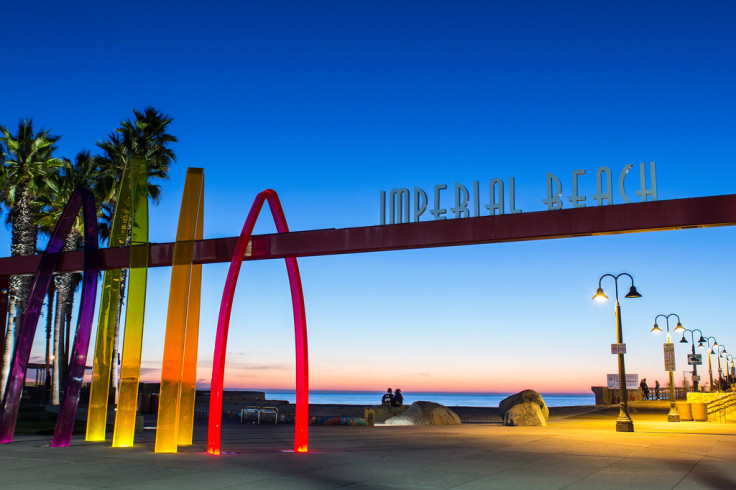
Every day, millions of gallons of sewage flow through a canyon and into the Pacific Ocean just south of the U.S.-Mexican border. This sewage, when combined with southward summer swells, has been reaching the shores of San Diego, affecting coastal towns like Imperial Beach.
The discharge from the Tijuana River is making life for the locals much more uncomfortable, bringing millions more gallons of treated and untreated sewage northward. Imperial Beach Mayor Paloma Aguirre described the situation as "the biggest environmental and public health disaster in the nation that nobody knows of," according to a Reuters report. Imperial Beach was recently deemed the most polluted in the country by the Surfrider Foundation.
To put the situation into perspective, a recent storm that hit the San Diego-Tijuana region in June sent more than 14.5 billion gallons of untreated raw sewage into California from Mexico, according to figures released by the International Boundary and Water Commission.
As a result, several stretches of beach in San Diego County remained closed due to sewage spills in nearby Tijuana with bacteria counts that exceeded the state's health standard for recreational waters. In fact, The LA Times reports that The Tijuana Slough Shoreline, which extends north from the U.S.-Mexico border, has been closed since late 2021 due to high bacteria levels.
The crisis, rooted in decades of infrastructure neglect, has not prompted an emergency declaration that would unlock recovery funds for environmental damage, public health threats, and tourism losses. Instead, local leaders and politicians are grappling with prolonged efforts to upgrade sewage treatment facilities on both sides of the border.
Baja California officials have announced that crucial repairs to Tijuana's sewage infrastructure will be completed soon, with plans to invest $530 million in sewage improvements between 2023 and 2027. But, as NGO San Diego Coastkeeper explains, public pledges to fix the issue have failed time and time again:
The crisis has only gotten worse as Tijuana's population has grown rapidly, immigration pressures at the border persist, and the U.S. agency responsible for treating much of the sewage has let its treatment plant fall into almost complete disrepair. Since October 2023, a staggering 31 billion gallons of raw sewage, polluted stormwater and trash have flowed down the Tijuana River into the Tijuana River Valley and the Pacific Ocean, closing numerous San Diego beaches , and sparking major concerns over public health risks, coastal water pollution and the degradation of the Tijuana River Estuary. This failure has significant repercussions for cross-border water quality and the well-being of communities in the San Diego region.
The International Wastewater Treatment Plant is undergoing a $30 million upgrade and a planned $400 million expansion funded by the federal government to double its capacity. However, an additional $200 million is needed to complete the project. South of the border, Tijuana's San Antonio de los Buenos sewage treatment plant is in disrepair, releasing large volumes of wastewater. A new $33.3 million plant is under construction, expected to be operational by September 30.
At the state level, a recent Senate Joint Resolution was passed on the issue. Authored by Senator Steve Padilla (D-District 18), it also urges the CDC to investigate this sewage crisis. "The pollution threatens the very water that we drink and the air that we breathe," said Padilla. "This is not just an environmental disaster: it is a public health crisis."
© 2024 Latin Times. All rights reserved. Do not reproduce without permission.







